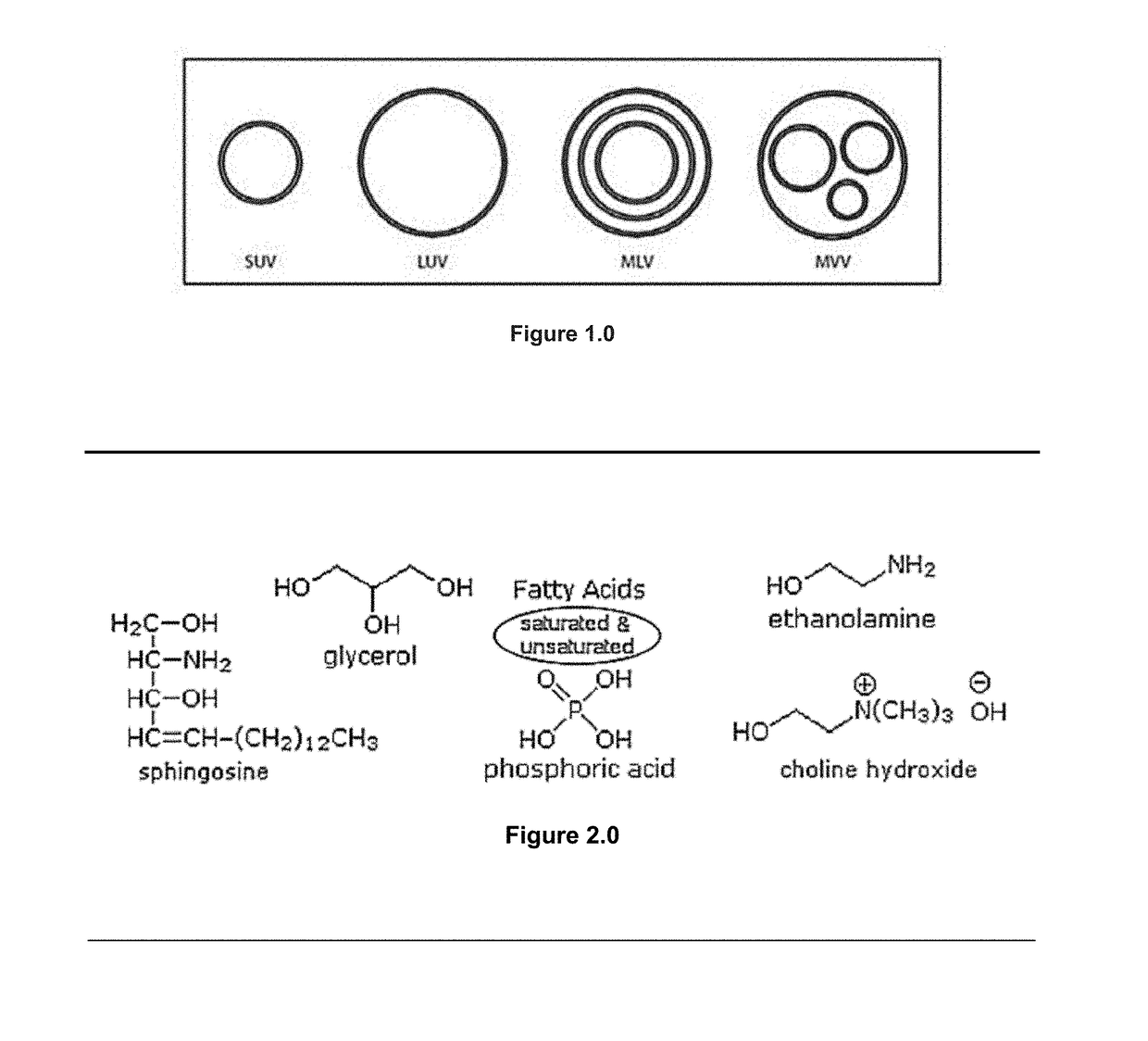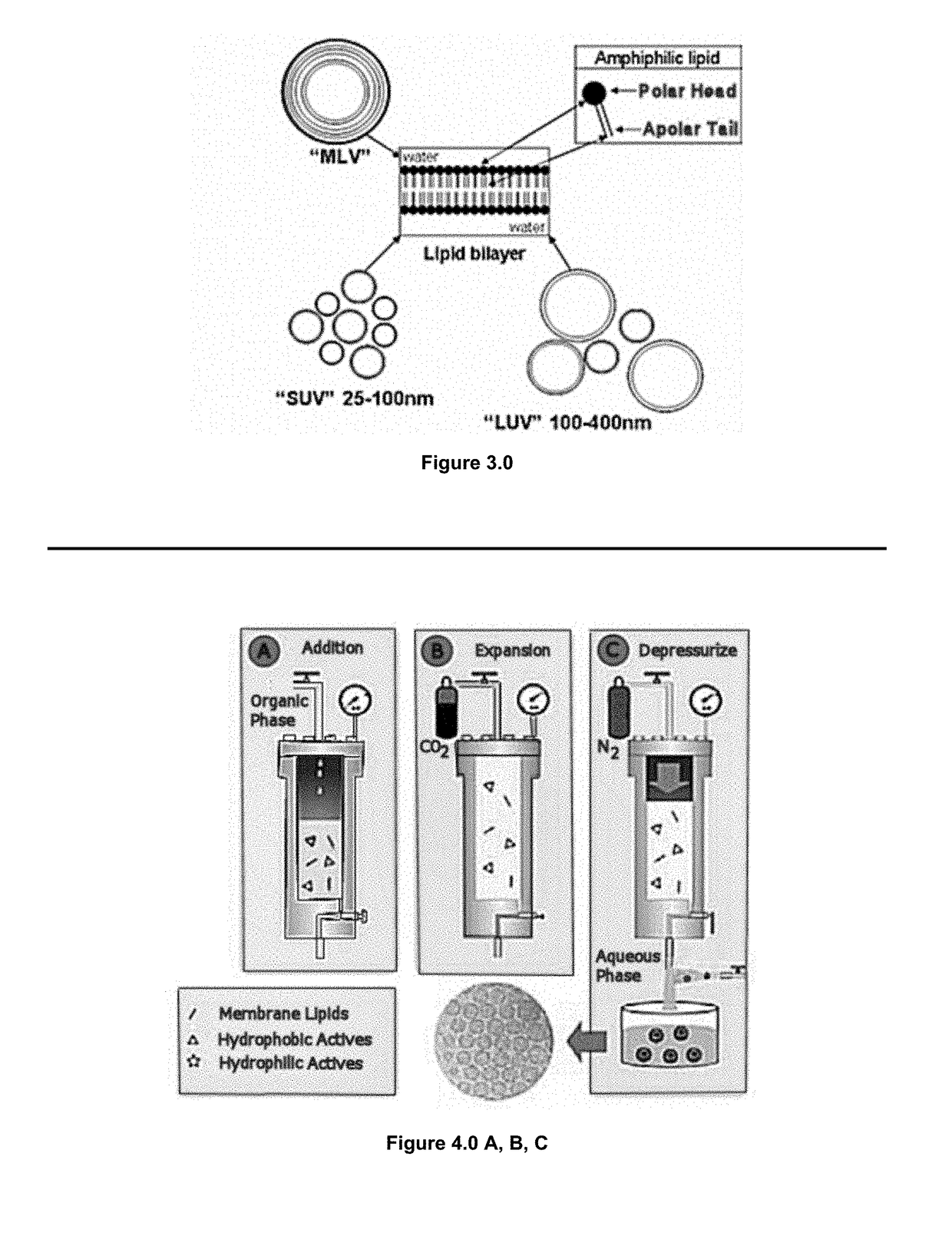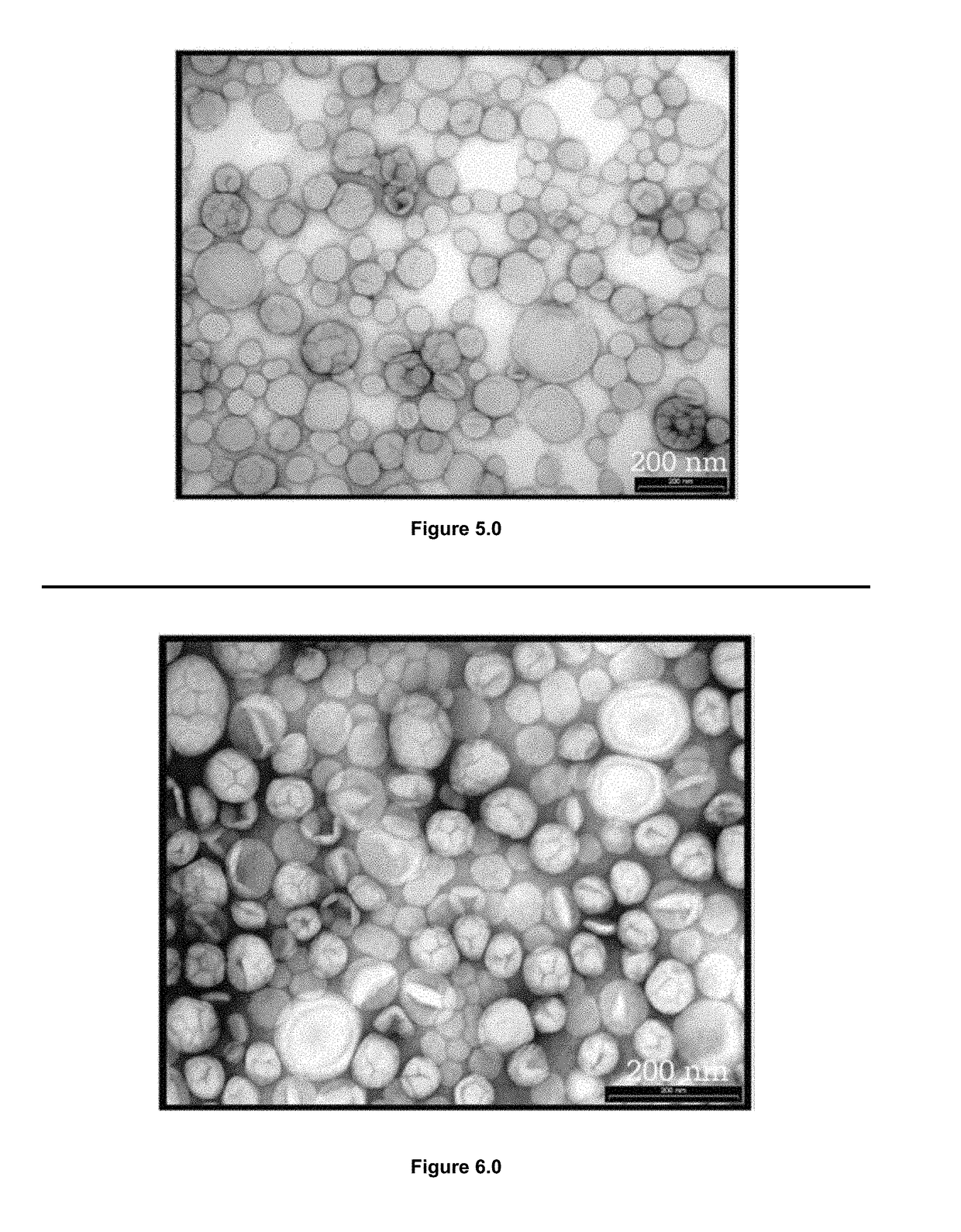Apparatus and method for preparing cosmeceutical ingredients containing epi-dermal delivery mechanisms
a technology of epidermal delivery and apparatus, which is applied in the field of apparatus and method for preparing cosmeceutical ingredients containing epidermal delivery mechanisms, can solve the problems of many of the characteristics of aged skin, loss of elasticity, and formation of wrinkles, and achieves enhanced permeability through biological membranes, improved stability, and improved elasticity.
- Summary
- Abstract
- Description
- Claims
- Application Information
AI Technical Summary
Benefits of technology
Problems solved by technology
Method used
Image
Examples
example 1
Phase Behavior Studies for the Low Pressure Low Temperature Alternative Construction of a Liposome and Niosome Vesicles (LPLTVs)-CO2-Solvent System
[0143]Prior to liposome or niosome formation, the phase behavior and solubility of the chosen lipid in dense CO2 were investigated to verify the suitability of the lipid for dense gas processing and, in particular LPLTVs processing.
[0144]Knowledge of the threshold pressure for precipitation of lipid from solution is also a key factor for design of the LPLTVs process in order to determine the maximum pressure for the technique so that yield is enhanced and loss of lipid in the expansion chamber minimized. The solid state of 1,2 distearoyl-sn-glycero-3-phosphocholine (DSPC) was maintained when the lipid was exposed to CO2 below 350 bar at 50° C. and 150 bar at 70° C. The solubility of DSPC in pure CO2 at 50° C. and pressures up to 280 bar was considered negligible. The addition of 5 mol % ethanol co-solvent did not significantly improve the...
example 2
Effects of Process Variables on LPLTVs Operation
[0148]The effects of solute composition, solute concentration, type of solvent, nozzle diameter, type of aqueous media, temperature of vesicle formation chamber, and volume of dense gas used for spraying on both the ease of operation of the embodiments LPLTVs process and the product were investigated. The results obtained for liposome formation are summarized in Table 1. Preliminary trials were conducted to establish viable nozzle options for the LPLTVs system. A variety of nozzles were tested including 102, 178, 254, 508, and 1016 μm i.d. stainless steel tubing and 100 μm i.d. Peeksil tubing (polymer tubing with fused silica lining). The most suitable nozzle for the LPLTVs apparatus, to control the flow rate and prevent blockages, was the 178 μm i.d. stainless steel tubing. The 254 μm nozzle was used in Set 1 (Table 1); however, there were difficulties in controlling the flow rate and maintaining constant pressure in the expansion cha...
example 3
Characterization of Liposomes Produced by the LPLTVs Process
The Liposome Morphology.
[0150]TEM (Transmission electron microscopy) was used to investigate the morphology of the particles produced in the embodiments LPLTVs process. At all conditions studied, submicron spheres were observed that possessed a similar structure to liposomes previously reported in the literature. The image shown in FIG. 5.0 indicates that spherical particles, generally ranging in size from 35 to 200 nm and more commonly 35-100 nm, were formed using the LPLTVs process. Images collected suggest that the liposomes were unilamellar. Not only were the spheres of a size range common to unilamellar liposomes, but in many images a single, thin wall can be seen at the edge of each particle. However, the arguments against positive identification of lamellarity using negative staining and TEM have been well documented in the literature. 18 Staining artifacts are difficult to identify and are often interpreted as unexp...
PUM
| Property | Measurement | Unit |
|---|---|---|
| diameter | aaaaa | aaaaa |
| diameter | aaaaa | aaaaa |
| diameter | aaaaa | aaaaa |
Abstract
Description
Claims
Application Information
 Login to View More
Login to View More - R&D
- Intellectual Property
- Life Sciences
- Materials
- Tech Scout
- Unparalleled Data Quality
- Higher Quality Content
- 60% Fewer Hallucinations
Browse by: Latest US Patents, China's latest patents, Technical Efficacy Thesaurus, Application Domain, Technology Topic, Popular Technical Reports.
© 2025 PatSnap. All rights reserved.Legal|Privacy policy|Modern Slavery Act Transparency Statement|Sitemap|About US| Contact US: help@patsnap.com



